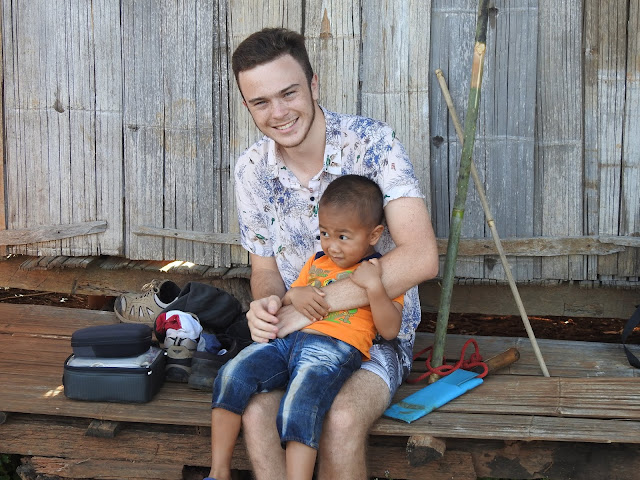Day 1 involved a quick visit to a butterfly farm where we scoffed a quick coffee as well.
 |
| Add caption |
Our second stop was a very touristy visit to a Karen village; more of a open market of Karen folks with their handicrafts. It was interesting to see them with their traditional finery and ornaments and especially the long neck deal.
 |
| Add caption |
 |
| Add caption |
 |
| Add caption |
 |
| Add caption |
From Wikipedia; The Kayan are a sub-group of Red Karen (Karenni people), Tibeto-Burman ethnic minority of Myanmar (Burma). The Kayan consists of the following groups: Kayan Lahwi (also called Padaung), Kayan Ka Khaung (Gekho), Kayan Lahta, Kayan Ka Ngan. Kayan Gebar, Kayan Kakhi and, sometimes, Bwe people (Kayaw).
Padaung (Yan Pa Doung) is a Shan term for the Kayan Lahwi (the group in which women wear the brass neck coils). The Kayan residents in Mae Hong Son Province in Northern Thailand refer to themselves as Kayan and object to being called Padaung. In The Hardy Padaungs (1967) Khin Maung Nyunt, one of the first authors to use the term "Kayan", says that the Padaung prefer to be called Kayan. On the other hand, Pascal Khoo Thwe calls his people Padaung in his 2002 memoir, From the Land of Green Ghosts: A Burmese Odyssey.
In the late 1980s and early 1990s due to conflict with the military regime in Myanmar, many Kayan tribes fled to the Thai border area.[3] Among the refugee camps set up there was a Long Neck section, which became a tourist site, self-sufficient on tourist revenue and not needing financial assistance.
Kayan number about 40,000 in Shan State (around the Pekon Township area) and 20,000 in Kayah State (around Demawso and Loikaw). A 2004 estimate puts the population at approximately 130,000. About 600 Kayan reside in the three villages open to tourists in Mae Hong Sorn, or in the Ban Mai Nai Soy refugee camp.
Next on our agenda was an elephant training camp. Here was an opportunity to feed and ride elephants. Everyone inour group was seemingly against the riding however most waded into the river with them and assisted in bathing them. The elephants returned the favour by spraying water over us.
 |
| Elephant camp area |
 |
| Me and elephant -that is me on the right. |































No comments:
Post a Comment